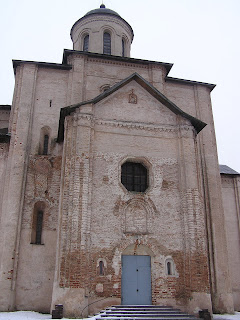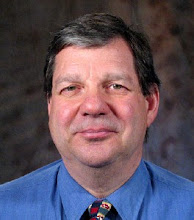












When Czar Peter the Great built St. Petersburg as the new Russian capital beginning in 1703, he constructed his Winter Palace on the banks of the Neva River, which runs through the heart of the city. The current Winter Palace was completed in 1762 and Catherine the Great, who ascended to the throne that year, immediately began adding other buildings — hermitages — to the complex to house her growing art collection. The last of these buildings was completed in 1852.
It is said that Catherine the Great dispatched courtiers throughout Europe with bags of cash to buy art treasures for her collection. The history of the Hermitage as an art museum traditionally dates to 1764.
The Hermitage’s vast collections were dispersed somewhat in the years following the Bolshevik revolution in 1917 and during World War I, when many works were moved to Moscow. After the war, the Soviet government established a network of regional art museums, raiding the Hermitage again in order to stock these museums. Finally, in 1934, the plundering stopped and many works were returned to the Hermitage.
This unbelievable collection of art was threatened again during the siege of Leningrad — as St. Petersburg was known during the Soviet period — by Germany in World War II. Before Hitler’s forces completely encircled the city, museum officials managed to two trains full of priceless art for safe keeping in the Ural Mountains. Photographs on display show the Hermitage’s walls filled with empty frames.
The Hermitage survived the war and in 1945, the art collection returned from evacuation. Restoration of the building continues to this day.
The Hermitage is ranked as one of the world’s half-dozen greatest art museums, with the largest collection of Rembrandts outside his native Amsterdam, as well as extensive collections of works by Da Vinci, Botticelli, Matisse, Renoir, Monet, Cezanne, Rousseau, Pena, Corot, Rodin sculptures, Van Gogh, Gauguin and two full rooms of works by Picasso.
It is said that Catherine the Great dispatched courtiers throughout Europe with bags of cash to buy art treasures for her collection. The history of the Hermitage as an art museum traditionally dates to 1764.
The Hermitage’s vast collections were dispersed somewhat in the years following the Bolshevik revolution in 1917 and during World War I, when many works were moved to Moscow. After the war, the Soviet government established a network of regional art museums, raiding the Hermitage again in order to stock these museums. Finally, in 1934, the plundering stopped and many works were returned to the Hermitage.
This unbelievable collection of art was threatened again during the siege of Leningrad — as St. Petersburg was known during the Soviet period — by Germany in World War II. Before Hitler’s forces completely encircled the city, museum officials managed to two trains full of priceless art for safe keeping in the Ural Mountains. Photographs on display show the Hermitage’s walls filled with empty frames.
The Hermitage survived the war and in 1945, the art collection returned from evacuation. Restoration of the building continues to this day.
The Hermitage is ranked as one of the world’s half-dozen greatest art museums, with the largest collection of Rembrandts outside his native Amsterdam, as well as extensive collections of works by Da Vinci, Botticelli, Matisse, Renoir, Monet, Cezanne, Rousseau, Pena, Corot, Rodin sculptures, Van Gogh, Gauguin and two full rooms of works by Picasso.
Photos, top to bottom: the Winter Palace and Hermitage; the entrance gate; first landing of the Grand Staircase; upper landing of the Grand Staircase; Armorial Hall, a reception area used by the czars; one of many ballrooms in the Winter Palace; St. George Hall, one of several receiving rooms used by the czars; the St. George Hall throne; the Silver Tomb of war hero Alexander Nevsky (1750s); the 18th century Peacock Clock; Rembrandt's masterpiece of Abraham and Isaac; The Return of the Prodigal Son by Rembrandt, the Hermitage's most famous painting; Da Vinci's Madonna.
Photos by Jerry Van Marter, taken Feb. 10, 2008.






































